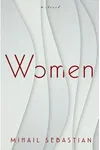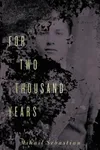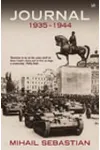Picture a Romanian storyteller who turned the pain of prejudice into poignant prose—meet Mihail Sebastian! Born Iosif Mendel Hechter in 1907, this Jewish writer captured the soul of interwar Romania with his novels, plays, and diaries. His sharp wit and unflinching honesty about antisemitism made him a literary star whose light still shines.
Sebastian’s work, like his controversial novel For Two Thousand Years and haunting Journal, 1935-1944: The Fascist Years, blends personal struggle with universal truths. Let’s dive into his world, where words became a shield and a mirror for a turbulent era.
The Making of Mihail Sebastian
Born in Brăila, a bustling port town on the Danube, Sebastian grew up in a Jewish family steeped in Romanian culture. He studied law in Bucharest, but the city’s vibrant literary scene stole his heart. Drawn to the Criterion group, he rubbed shoulders with giants like Mircea Eliade and Eugène Ionesco. Yet, as antisemitism crept into Romania, Sebastian’s Jewish identity set him apart, shaping his voice as a writer who faced exclusion with courage.
His early career bloomed with essays and journalism, but it was his novels and plays that made waves. Sebastian’s knack for blending lyrical prose with social critique turned heads, even as he navigated a society growing hostile to Jews.
Mihail Sebastian’s Unforgettable Stories
Sebastian’s bibliography is a treasure trove of emotion and insight. His 1934 novel For Two Thousand Years is a raw, diary-like exploration of Jewish identity in Romania. Its preface by mentor Nae Ionescu sparked controversy with antisemitic remarks, yet Sebastian published it, later defending his choice in the biting essay collection How I Became a Hooligan. This fearless move cemented his reputation as a truth-teller.
His plays, like The Star Without a Name (1942), shimmer with Chekhovian charm, weaving romance and existential musings. The Town with Acacia Trees (1935) captures adolescent longing with Proustian sensitivity, while The Accident (1940) spins a love story against Bucharest’s art scene. Above all, his Journal, 1935-1944, published posthumously, chronicles the rise of fascism and personal betrayal with devastating clarity, earning comparisons to Anne Frank’s diary.
Sebastian’s style—lyrical, introspective, and laced with irony—mirrors his influences, Marcel Proust and Jules Renard. His works tackle identity, love, and resilience, offering a window into a Romania torn by ideology and war.
Why Mihail Sebastian Matters
Sebastian’s legacy transcends Romania, resonating with readers worldwide. His journals, translated into multiple languages, offer a firsthand account of antisemitism’s toll, making him a vital voice in Holocaust literature. His plays, performed in English, Hebrew, and Chinese, showcase his universal appeal. In 2006, he posthumously won the Geschwister-Scholl-Preis for his diaries, cementing his place among literary greats.
Despite his tragic death in 1945—struck by a truck just months after Romania’s liberation—Sebastian’s work endures. He’s a beacon for writers grappling with identity and injustice, proving the pen’s power to preserve humanity amid chaos.
- Born: October 18, 1907, Brăila, Romania
- Key Works: For Two Thousand Years, The Star Without a Name, Journal, 1935-1944
- Award: Geschwister-Scholl-Preis (2006, posthumous)
- Died: May 29, 1945
Snag Journal, 1935-1944 and dive into Mihail Sebastian’s world of wit, heart, and unflinching truth!




